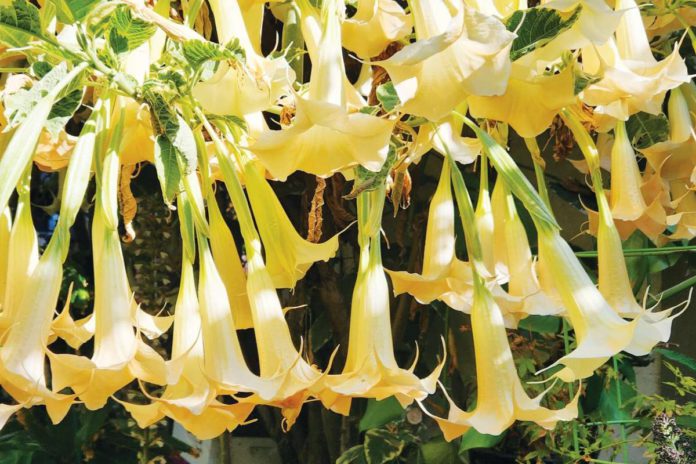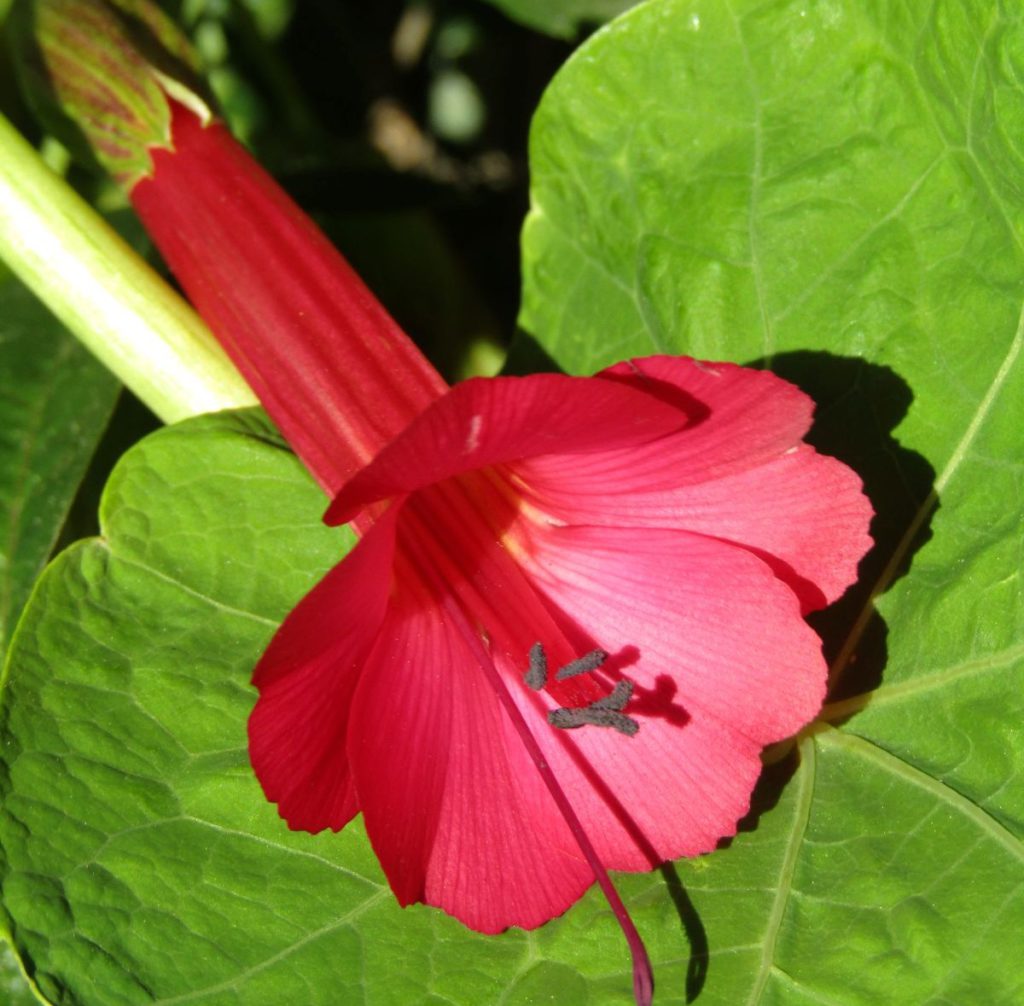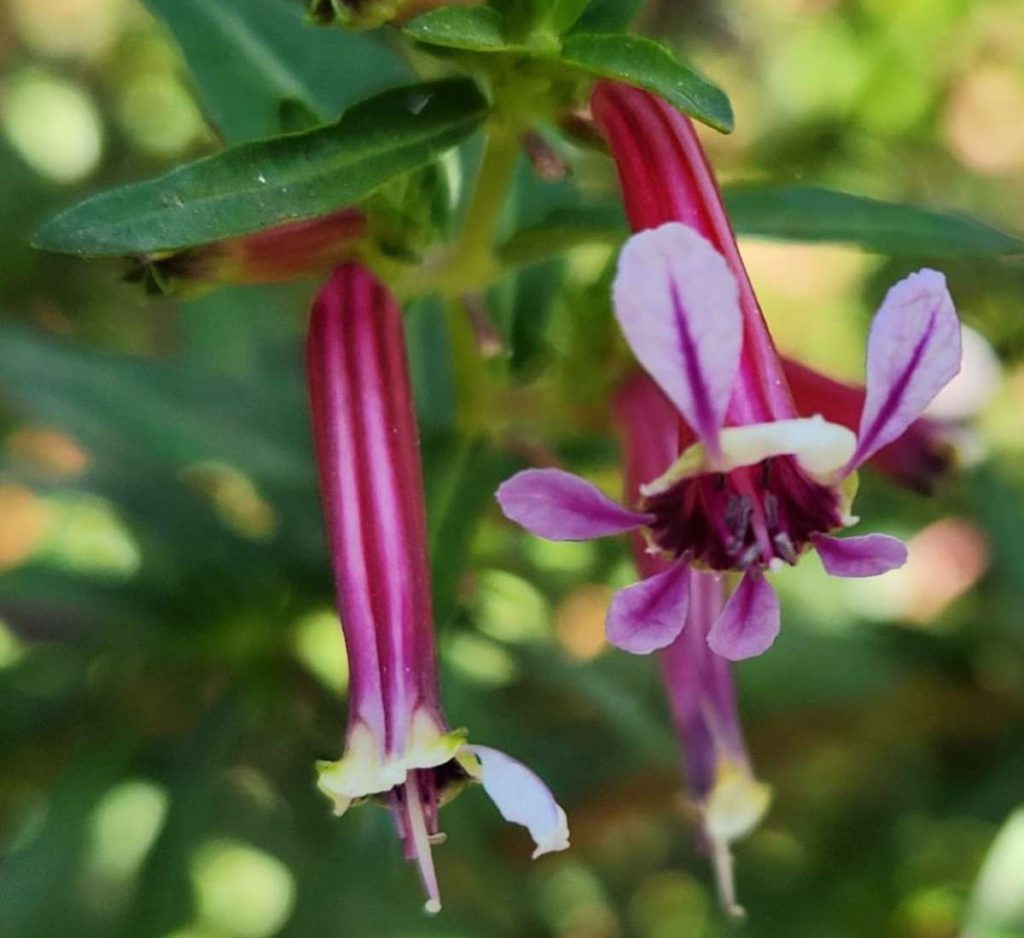Attracting hummingbirds, bees and butterflies is a popular goal for gardeners. There’s a wide range of flowering plants that can provide their nectar requirements. However, there’s one flower shape that’s specifically evolved to attract hummingbirds, bees and butterflies while restricting access to nectar for other pollinators.
The primary purpose of a flower is reproduction. Flowers come in many different shapes to aid this purpose. The structure of a cup-shaped flower allows it to support the weight of large pollinating insects such as beetles. Disk-shaped flowers that are mostly flat offer places for pollinators such as butterflies to land easily. These shapes attract a wide range of insects. Competition can make it more difficult for bees, butterflies and hummingbirds to find available nectar.
Trumpet-shaped flowers can be pollinated more dependably than those with other shapes. The nectar is located deep inside the flower. This depth, a lack of a strong scent and a poor landing platform keep nectar hidden from other pollinators.
Through coevolution, hummingbirds, butterflies, moths and some bee species have developed specialized tongues, making this nectar accessible. The relationship between these specific pollinators and flowers almost guarantees a precise transfer of pollen to the pollinator. Many trumpet-shaped flowers’ reproductive organs are positioned to brush pollen against a hummingbird’s forehead as it laps up nectar.
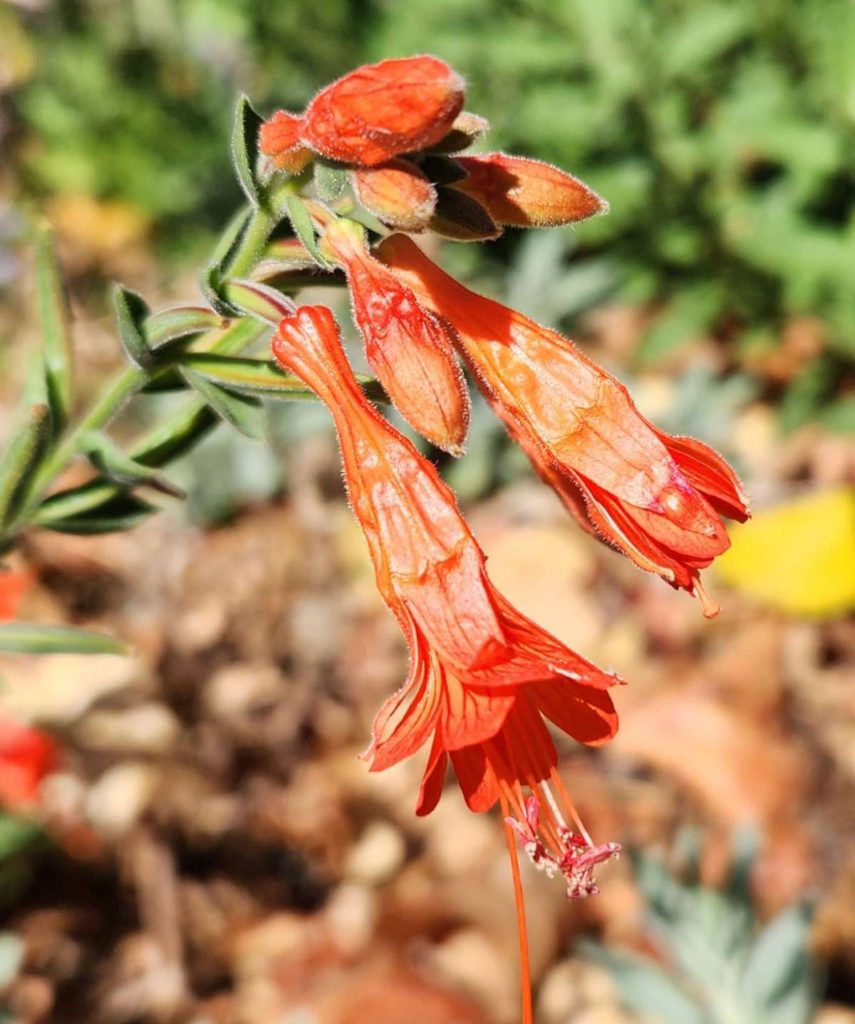
Trumpet-shaped flowers have other features that further entice these three specialized pollinators. Many trumpet-shaped flowers have vivid red and orange hues which are particularly appealing to hummingbirds. Yellow, pink and purple trumpet-shaped flowers, in addition to the red and orange ones, are especially attractive to butterflies and bees. Some trumpet-shaped flowers have patterns that guide hummingbirds to the nectar. Some, such as those on a trumpet vine, offer up to 10 times more nectar than other flowers.
Below are five plants that have trumpet-shaped flowers that will figuratively sound “Reveille” and wake the garden up with hummingbirds, butterflies and bees.
Cigar plant, Cuphea ignea, refers to a single species of Cuphea which has small trumpet- or cigar-shaped flowers. There are many varieties and several cultivars and hybrids. Cupheas are small, evergreen, perennial, semi-woody shrubs with compact branching. They produce a dense canopy of one-inch, trumpet-shaped flowers from spring until fall. Each type of Cuphea ignea produces different tri-colored flower patterns, and bees in particular love this plant.
California Fuchsia, Epilobium canum, is a California native, drought tolerant, perennial groundcover. It produces a carpet of bright orange tubular flowers from spring until early fall, and attracts hummingbirds and butterflies in particular. It spreads easily, making it a great low-maintenance plant. However, because it’s a ground cover, it can make hummingbirds more vulnerable to cat ambushes.
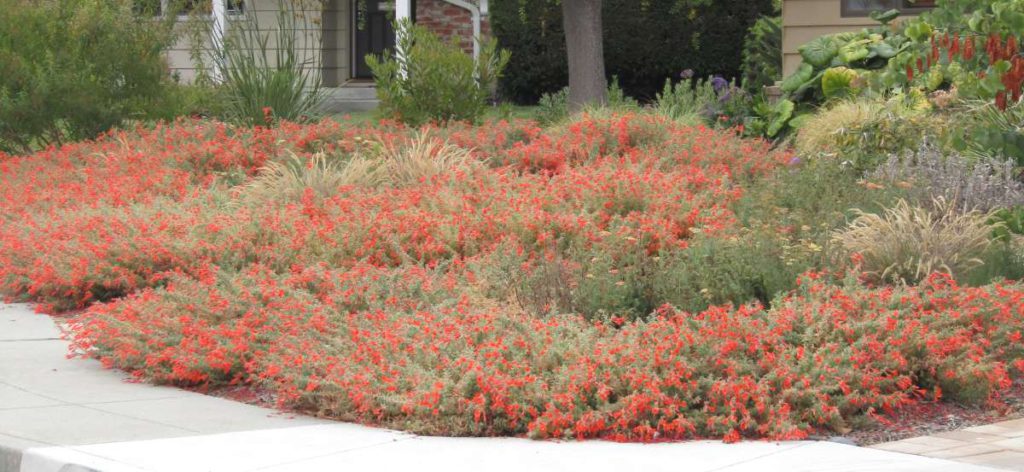
Angel’s Trumpet, Brugmansia, is a small tree or shrub native to tropical regions of South America. It can bloom with countless large trumpet-shaped flowers up to three times a year in many parts of the Bay Area. The large flowers attract hummingbirds and bees. There are examples of butterfly larvae using Brugmansias as food. Although the leaves are toxic, the pupae and adult butterflies have evolved to store the toxin and use it as a defense mechanism. Many varieties also have a wonderful night scent as an added bonus.
Yellow Bells, Tecoma stans, is a perennial shrub in the trumpet vine family. It’s native to the southwestern region of the U.S. and Mexico. It produces numerous vibrant yellow, trumpet-shaped flowers that entice hummingbirds and butterflies. It can grow from three feet tall to over eight feet and blooms spring through early fall. It can grow in full sun or semi-shade, which offers the hummingbirds and butterflies a nice break from the heat during the summer.
Mini Angel’s Trumpet, Iochroma, is one of the few plants whose Latin name is more commonly used than its common name. It can be considered a shrub or a small tree. Native to Mexico, Central and South America, it produces numerous small clusters of trumpet-shaped flowers which attract hummingbirds and bees. Natural colors include purple, white, yellow, blue and red, with cultivars and hybrids creating different shades for the Iochroma’s flower palette.

Natural colors for Iochroma, or mini Angel’s Trumpet, include purple, white, yellow, blue and red. Daniel O’Donnell 
Bees in particular love the tri-color pattern of Cuphea Ignea, or Cigar Plant. Daniel O’Donnell
It’s beneficial to the local ecosystem to have different flowering plants throughout the garden, in planters on patios, or in pots on balconies to support a wide variety of pollinators. However, growing plants with trumpet-shaped flowers will not only support the environment, it will turn the garden into a resounding example of how to successfully attract hummingbirds, bees and butterflies.
Daniel O’Donnell is the co-owner and operator of an organic landscape design/build company in Fremont. www.Chrysalis-Gardens.com

